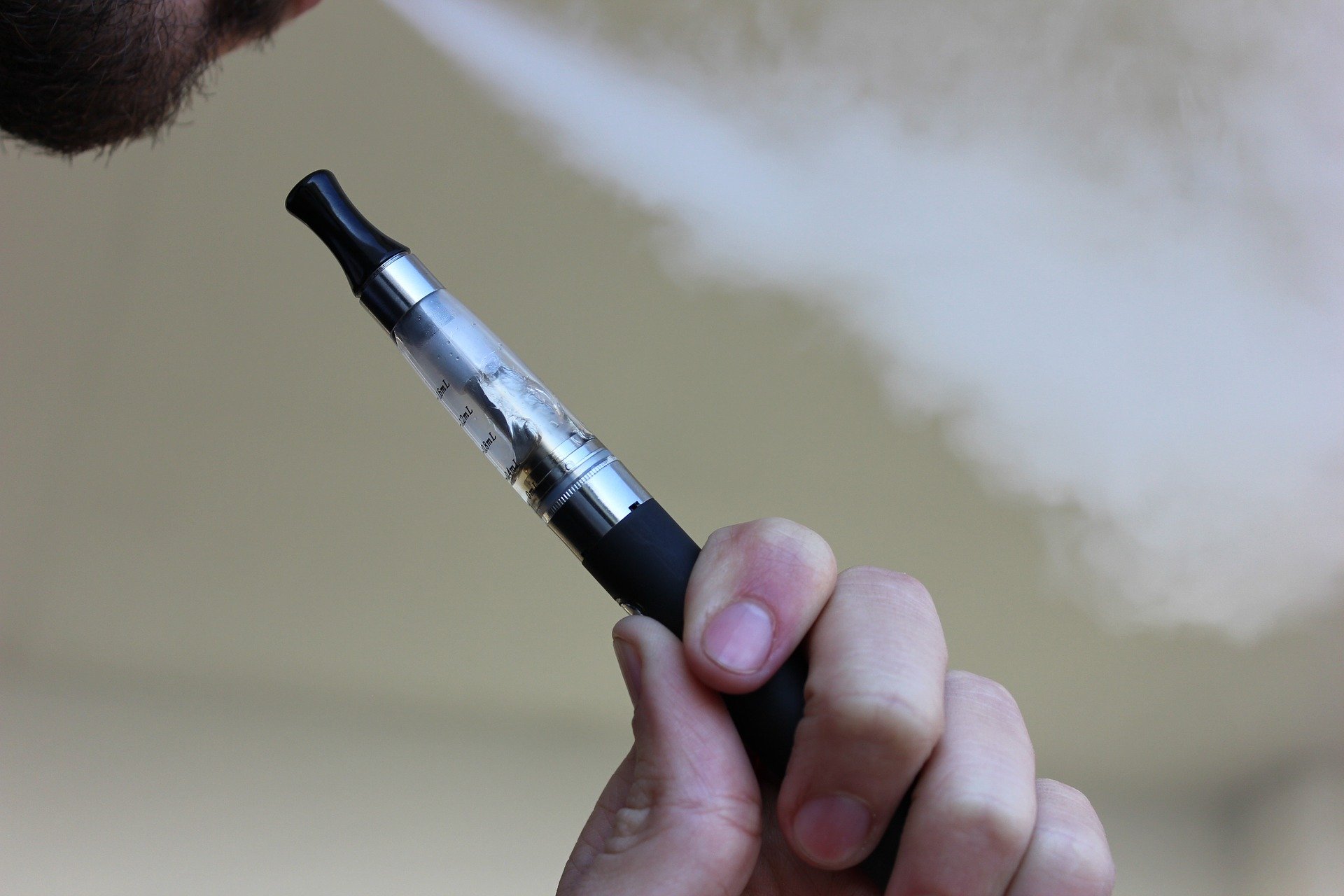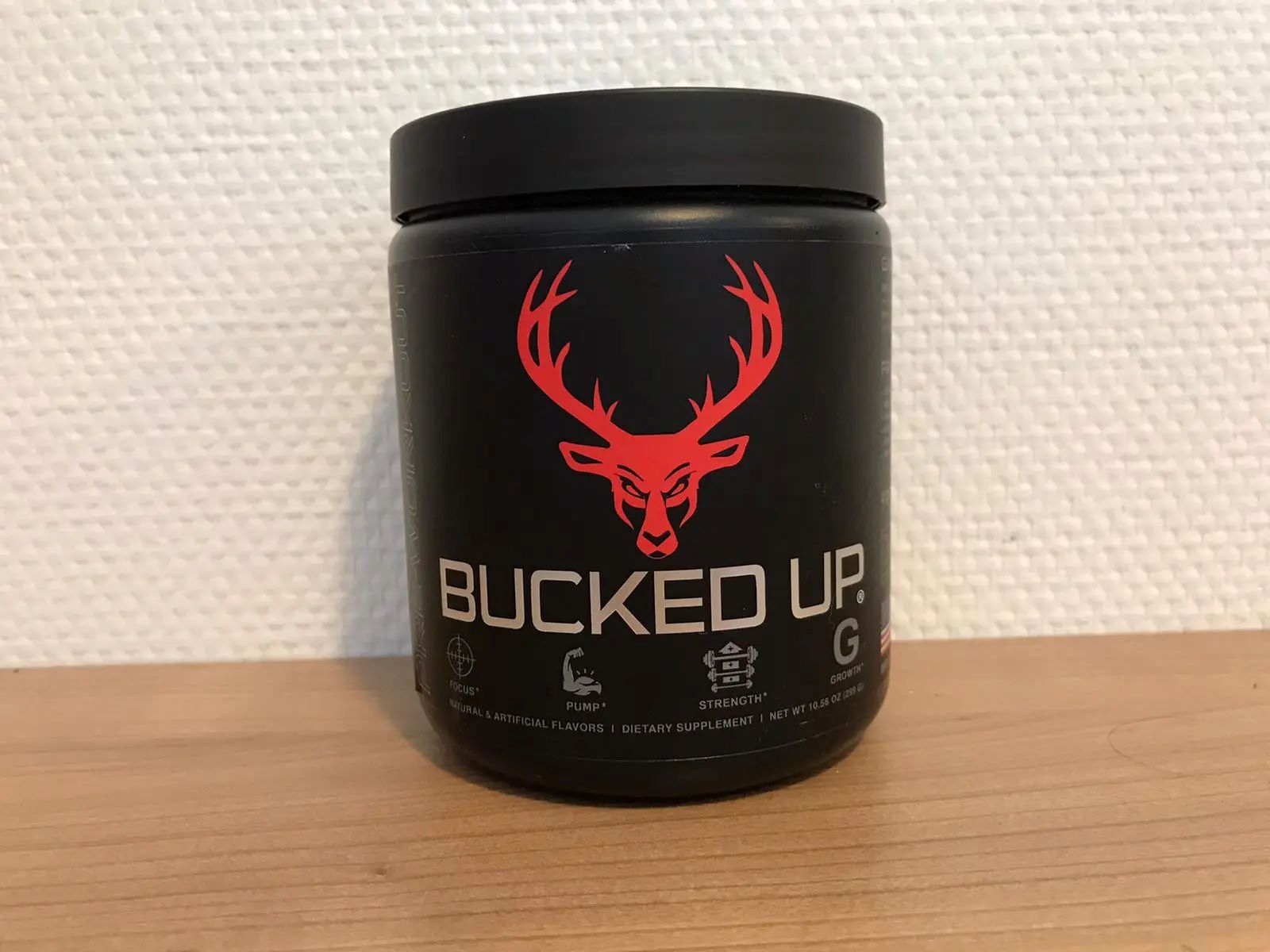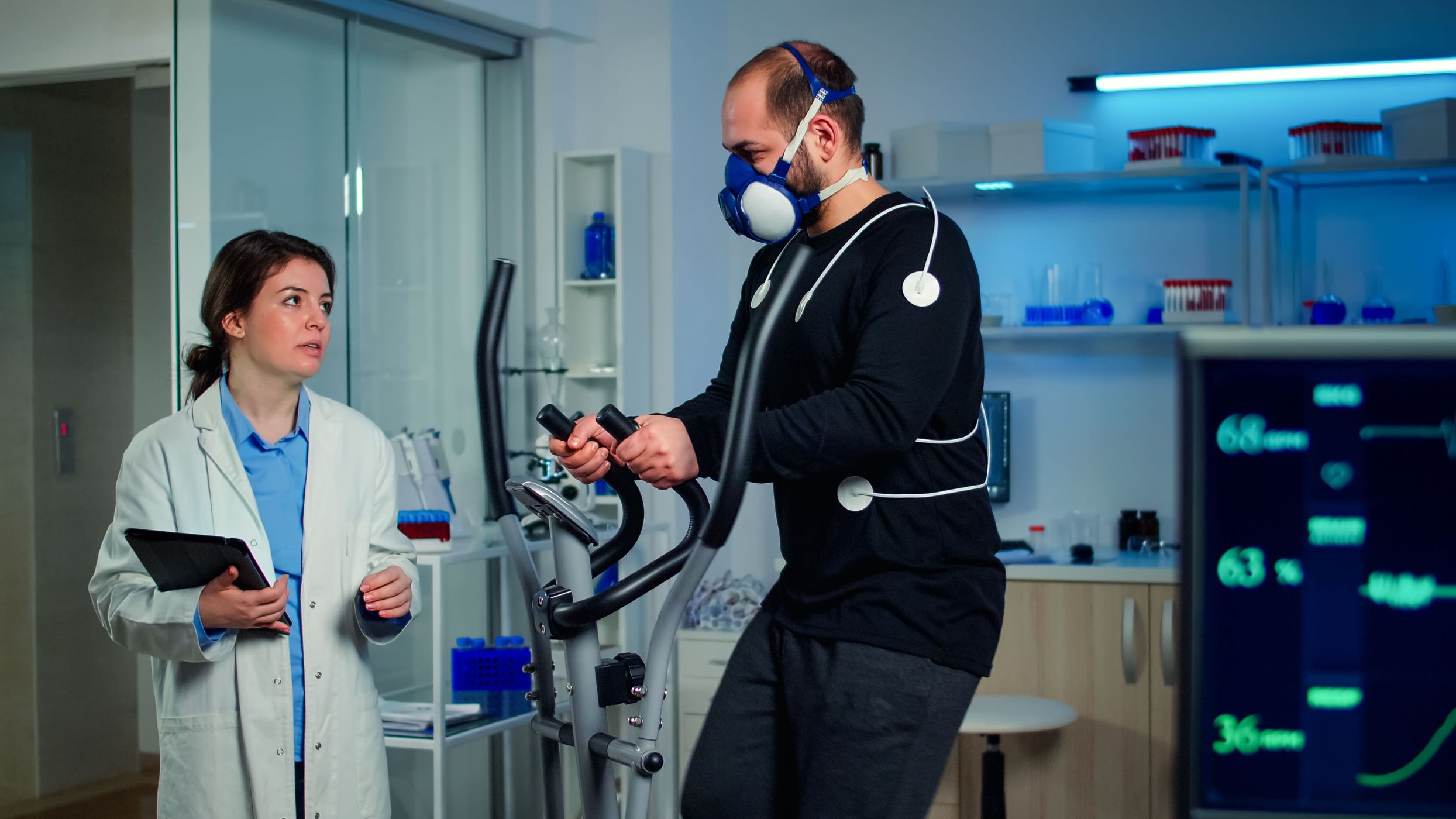Home>Misc>Featured>How Does Vaping Affect Athletic Performance


Featured
How Does Vaping Affect Athletic Performance
Modified: January 22, 2024
Discover how the featured vaping trend impacts athletic performance and find out if it enhances or hinders your fitness goals.
Introduction
Vaping, the act of inhaling and exhaling vapor produced by an electronic cigarette or similar device, has gained significant popularity in recent years. With its sleek designs, variety of flavors, and the perception of being a potentially safer alternative to traditional smoking, many individuals, including athletes, have turned to vaping.
However, as vaping continues to attract a widespread following, it is important to understand its potential impact on athletic performance. While the long-term health effects of vaping are still being researched, there is growing concern over its immediate effects on the respiratory system, lung function, cardiovascular health, endurance, strength, and even recovery.
This article aims to provide a comprehensive overview of how vaping can affect athletic performance. By examining the research and scientific studies available, we can uncover potential risks and benefits associated with vaping as it relates to sports and exercise.
It is important to note that regulations and opinions surrounding vaping vary among different sports organizations and governing bodies. Some may have restrictions or bans in place, while others may have no specific regulations addressing vaping. Nevertheless, it is crucial for athletes to make informed decisions and understand how vaping may impact their physical performance.
Whether you are a professional athlete, a weekend warrior, or simply someone who enjoys staying active, this article will shed light on the potential effects of vaping on your athletic pursuits. From respiratory health to psychological factors, we will explore the potential implications of vaping on various aspects of athletic performance.
So, if you are curious about the impact vaping can have on your athletic abilities, read on to discover the current research and findings on this controversial topic.
Understanding Vaping
Vaping involves the use of electronic cigarettes or similar devices, which heat a liquid containing nicotine or other substances to create an aerosol that is then inhaled. Unlike traditional tobacco smoking, vaping does not involve the combustion of tobacco, producing less smoke and odor.
One of the key components of vaping is the e-liquid, which typically consists of propylene glycol, vegetable glycerin, flavorings, and in some cases, nicotine. While there are nicotine-free options available, many e-liquids do contain this addictive substance, making vaping a potential gateway to smoking for non-smokers.
One reason vaping has become popular among athletes is the perception that it is a safer alternative to smoking traditional cigarettes. While it is true that vaping eliminates many of the harmful chemicals found in tobacco smoke, it is important to note that it is not without risks.
The long-term effects of vaping are still being studied, but there is evidence to suggest that it can have negative impacts on the respiratory system and overall health. Additionally, the use of flavored e-liquids has raised concerns about their potential harmful effects on lung health.
Understanding the components of vaping and its potential risks is crucial for athletes who are considering using these devices. By being informed about the potential impacts on their bodies, athletes can make better decisions about the use of vaping in relation to their training, performance, and overall well-being.
It is important to note that the regulations surrounding vaping vary in different countries and sporting organizations. Some have banned vaping altogether, while others have specific guidelines in place. As an athlete, it is important to familiarize yourself with the rules and regulations of your sport regarding the use of vaping products.
In the following sections, we will explore the effects of vaping on different aspects of athletic performance, including its impact on the respiratory system, lung function, cardiovascular health, endurance, strength, recovery, and even psychological factors. By understanding the potential risks and benefits of vaping, athletes can make informed decisions about their own well-being and performance.
Effects of Vaping on the Respiratory System
The respiratory system plays a crucial role in athletic performance, as it is responsible for supplying oxygen to the muscles and removing carbon dioxide during exercise. Therefore, any negative impact on the respiratory system can have significant consequences for an athlete’s performance.
Research suggests that vaping can have detrimental effects on the respiratory system, including the airways and the lungs. Inhalation of e-cigarette aerosols can lead to irritation of the airways, resulting in symptoms such as coughing, wheezing, and shortness of breath.
In some cases, vaping has been associated with an increased risk of respiratory infections. The aerosols produced by e-cigarettes can contain harmful substances, including chemicals and toxins, which can compromise the immune system and make the lungs more susceptible to infections.
Frequent vaping can also lead to the development of a condition known as “vapers’ lung” or “e-cigarette or vaping product use-associated lung injury” (EVALI). EVALI is characterized by symptoms such as cough, chest pain, and difficulty breathing, and can be severe enough to require hospitalization.
Additionally, there is a concern that the flavors used in e-cigarettes can further exacerbate the negative effects on the respiratory system. Studies have shown that some flavorings, such as diacetyl, can cause irreversible damage to the airways and contribute to the development of respiratory diseases, such as bronchiolitis obliterans or “popcorn lung”.
It is worth noting that while vaping may be perceived as less harmful than traditional smoking, it is not without risks. Several studies have found that the harmful effects of vaping on the respiratory system are comparable to or even greater than smoking conventional cigarettes.
As an athlete, maintaining optimal respiratory function is crucial for maximizing performance. The potential negative effects of vaping on the respiratory system should be taken into consideration when making decisions about its use.
In the next section, we will delve into the impact of vaping on lung function and explore how it can affect an athlete’s ability to perform at their best.
Impact of Vaping on Lung Function
Lung function is essential for athletes as it determines their ability to take in oxygen and remove carbon dioxide during physical exertion. Any impairment in lung function can significantly impact an athlete’s performance and endurance.
Studies have indicated that vaping can have a negative impact on lung function. The inhalation of e-cigarette aerosols can lead to inflammation and irritation in the airways, which can affect the ability of the lungs to expand and contract efficiently.
One study published in the American Journal of Respiratory and Critical Care Medicine found that e-cigarette use was associated with a decrease in lung function markers, such as forced expiratory volume in one second (FEV1) and forced vital capacity (FVC). These measures are crucial indicators of lung health and are directly linked to an athlete’s ability to perform at their best.
Research has also shown that vaping can impair the ability of the lungs to transfer oxygen into the bloodstream effectively. This can result in reduced oxygen delivery to the muscles during exercise, leading to decreased endurance and overall performance.
Furthermore, the chemicals and toxins present in e-cigarette aerosols can damage the cells lining the airways and the delicate tissues of the lungs. This can lead to the development of respiratory conditions, such as chronic bronchitis and emphysema, which can have long-term implications for an athlete’s lung function.
It is important to note that some athletes may turn to vaping in an attempt to enhance their performance by using e-cigarettes that contain substances like THC or CBD. However, there is limited scientific evidence to support the notion that these substances can improve athletic performance. In fact, the potential negative effects of vaping on lung function and overall health overshadow any potential performance benefits.
For athletes looking to optimize their lung function and performance, it is advisable to steer clear of vaping. Prioritizing proper training, nutrition, and maintaining a smoke-free lifestyle are key factors in promoting optimal lung function and overall well-being.
In the next section, we will explore the impact of vaping on cardiovascular health and how it can affect an athlete’s endurance and stamina.
Influence of Vaping on Cardiovascular Health
Cardiovascular health is crucial for athletes as it directly impacts their endurance, stamina, and overall performance. Any compromise in cardiovascular function can hinder an athlete’s ability to sustain physical activity and reach peak performance levels.
Vaping has been linked to several negative effects on cardiovascular health. Inhalation of e-cigarette aerosols can lead to an increase in heart rate and blood pressure. The nicotine present in many e-liquids is a stimulant that can cause the arteries to narrow and the heart to work harder, potentially leading to an increased risk of cardiovascular problems.
Research has shown that vaping can impair the function of the endothelium, which is the inner lining of blood vessels. Impaired endothelial function can lead to decreased blood flow and the development of cardiovascular diseases, such as atherosclerosis.
In addition, the chemicals and toxins present in e-cigarette aerosols can have a harmful effect on the cardiovascular system. Studies have demonstrated that exposure to these substances can lead to oxidative stress, inflammation, and impaired vascular function.
Furthermore, there are concerns that vaping may increase the risk of blood clot formation. One study published in the Journal of the American Heart Association found that e-cigarette use was associated with an increased activation of blood clotting factors, which can raise the risk of cardiovascular events, such as heart attacks and strokes.
It is important to note that while vaping is often marketed as a safer alternative to traditional smoking, it still poses risks to cardiovascular health. The long-term effects of vaping on cardiovascular health are still being researched, but current evidence suggests that it is not a risk-free activity.
For athletes, maintaining optimal cardiovascular health is essential for achieving peak performance. The potential negative effects of vaping on the cardiovascular system should be carefully considered when assessing its impact on athletic performance.
In the next section, we will explore the effects of vaping on endurance and stamina, two crucial components of athletic performance.
Effects of Vaping on Endurance and Stamina
Endurance and stamina are key components of athletic performance, allowing athletes to sustain prolonged physical activity and perform at their best. Any negative impact on these factors can significantly hinder an athlete’s ability to excel in their chosen sport.
Research suggests that vaping can have detrimental effects on endurance and stamina. The chemicals and toxins present in e-cigarette aerosols can impair lung function, leading to reduced oxygen uptake and delivery to the muscles during exercise.
Decreased oxygen availability can lead to early fatigue, a decrease in stamina, and reduced overall endurance. This can have a significant impact on an athlete’s ability to sustain high-intensity exercise for extended periods and perform at their peak.
Furthermore, the potential for lung inflammation and irritation caused by vaping can further compromise an athlete’s respiratory function, leading to increased breathlessness and reduced endurance.
In addition to the impact on lung function, vaping can also have negative effects on cardiovascular health. The increase in heart rate and blood pressure caused by vaping can contribute to early fatigue during exercise and limit an athlete’s ability to maintain a high level of intensity for an extended period.
It is important to recognize that vaping is not a performance-enhancing activity. While some athletes may believe that vaping can improve their endurance or stamina, there is no scientific evidence to support this notion. In fact, the potential negative effects of vaping on lung function and cardiovascular health far outweigh any perceived performance benefits.
Athletes looking to optimize their endurance and stamina should prioritize other factors such as proper training, nutrition, hydration, and rest. Maintaining a smoke-free and vape-free lifestyle is crucial for ensuring optimal respiratory and cardiovascular function, enhancing overall athletic performance.
In the next section, we will examine the potential implications of vaping on strength and power performance, key components for athletes engaged in activities that require explosive movements.
Implications of Vaping on Strength and Power Performance
Strength and power are vital elements for athletes engaged in activities that require explosive movements, such as weightlifting, sprinting, and jumping. Any negative impact on these factors can significantly hinder an athlete’s ability to generate force, propel themselves, and achieve optimal performance.
While research specifically examining the effects of vaping on strength and power performance is limited, the potential negative impacts on the respiratory and cardiovascular systems can indirectly affect an athlete’s ability to maximize their strength and power.
Vaping can impair lung function, reducing the amount of oxygen available to the muscles during exercise. Decreased oxygen supply can lead to muscle fatigue, limiting an athlete’s ability to generate force and maintain power output.
Furthermore, the increase in heart rate and blood pressure caused by vaping can impact an athlete’s cardiovascular function. This may result in decreased blood flow to the muscles, impairing their ability to contract efficiently and generate maximal force.
The potential respiratory and cardiovascular effects of vaping can also influence an athlete’s recovery between sets or bouts of intense activity. Impaired recovery can lead to diminished performance in subsequent efforts, limiting an athlete’s ability to train at high intensities and make progress in their strength and power development.
It is essential to note that vaping does not have any proven performance-enhancing benefits. Athletes should avoid falling into the misconception that vaping can enhance their strength or power performance. In reality, the potential negative impact on respiratory and cardiovascular health far outweighs any perceived performance benefits.
For athletes seeking to optimize their strength and power, focus on other aspects such as proper training programs, nutrition, adequate rest, and recovery strategies. Maintaining a vape-free and smoke-free lifestyle is essential for preserving optimal respiratory and cardiovascular health, ultimately contributing to improved strength and power performance.
As we continue exploring the effects of vaping on athletic performance, we will now examine the potential impact on recovery and muscle repair, factors crucial for athletes aiming to optimize their training adaptations.
Vaping’s Impact on Recovery and Muscle Repair
Recovery and muscle repair play a crucial role in an athlete’s training and performance. The ability to properly recover from intense workouts allows for improved adaptation and progress. Any negative impact on recovery and muscle repair can hinder an athlete’s ability to build strength, endurance, and overall athletic performance.
While research specifically examining the effects of vaping on recovery and muscle repair is limited, the potential negative impacts on the respiratory and cardiovascular systems can indirectly affect these processes.
Vaping can impair lung function, reducing the amount of oxygen available to the muscles during exercise. Decreased oxygen supply can hinder the delivery of nutrients and oxygen to the muscles, slowing down the repair process. This can prolong the recovery time between workouts and delay muscle repair, potentially leading to decreased gains in strength and performance.
The increase in heart rate and blood pressure caused by vaping can also impact circulation and blood flow to the muscles. Proper blood flow is essential for delivering nutrients and removing waste products from the muscles, both of which are crucial for effective muscle repair. Impaired blood flow can negatively affect the speed and efficiency of the recovery process.
Furthermore, the potential negative effects of vaping on immune function can hinder the body’s ability to fight off infections and inflammation, both of which are common during intense training periods. Impaired immune function can further delay the recovery and muscle repair process, prolonging the time needed for an athlete to fully recover and be ready for the next training session.
It is important to emphasize that vaping does not have any proven benefits for recovery and muscle repair. Athletes should avoid the misconception that vaping can enhance their recovery or accelerate muscle repair. In reality, the potential negative impacts on respiratory and cardiovascular health outweigh any perceived benefits.
For athletes looking to optimize their recovery and muscle repair, focus on other key factors such as adequate sleep, proper nutrition, hydration, and utilizing effective recovery strategies such as stretching, foam rolling, and other forms of active recovery. Ensuring a vape-free and smoke-free lifestyle is essential for promoting optimal respiratory and cardiovascular health, aiding in efficient recovery and muscle repair.
As we conclude our exploration of the effects of vaping on athletic performance, we will summarize the key findings and implications of vaping on various aspects of performance.
Psychological Effects of Vaping on Athletic Performance
Athletic performance is not solely determined by physical factors. The psychological aspect plays a significant role in an athlete’s ability to perform at their best. It is important to consider the potential psychological effects of vaping on athletic performance.
Vaping, like smoking, is often associated with stress relief and relaxation. Some athletes may turn to vaping as a coping mechanism for managing stress and anxiety related to training, competitions, or other aspects of their athletic pursuits. However, it is crucial to understand the potential risks and drawbacks of relying on vaping for psychological support.
Vaping, particularly the use of e-liquids containing nicotine, can be addictive. Nicotine addiction can lead to dependency, which may negatively impact an athlete’s mental focus, motivation, and overall psychological well-being. Withdrawal symptoms from nicotine addiction, such as irritability and mood swings, can further disrupt an athlete’s mental state, potentially impacting their performance.
Moreover, the flavored e-liquids used in vaping can have a powerful psychological influence. The various flavors, often marketed with catchy names and appealing packaging, can create an association or habit loop in the brain, leading to a psychological dependence on vaping. This can distract an athlete’s focus and potentially lead to compulsive vaping behaviors that can interfere with their training and performance.
Additionally, the perceived social acceptance of vaping in certain athletic circles may contribute to peer pressure and influence an athlete’s decision to vape. This social factor can impact an athlete’s psychological well-being and self-image, potentially affecting their confidence, motivation, and overall mental state.
It is important for athletes to recognize the potential psychological effects of vaping and consider healthier alternatives for managing stress and anxiety. Engaging in stress-reducing activities like meditation, mindful breathing exercises, or seeking support from mental health professionals can be more beneficial for an athlete’s overall well-being and performance.
The decision to vape or not is a personal one, but athletes should carefully consider the potential psychological impacts of vaping on their mental health, motivation, and performance. Maintaining a balanced and healthy psychological state is crucial for athletic success.
As we conclude this discussion on the effects of vaping on athletic performance, it is essential for athletes to be fully informed about the potential risks and implications of vaping. By considering the evidence and making conscious decisions, athletes can optimize their performance, protect their health, and strive towards their athletic goals.
Conclusion
Vaping has become a popular trend, attracting athletes and individuals from various walks of life. However, when it comes to athletic performance, it is crucial to understand the potential risks and implications of vaping.
Through our exploration of the effects of vaping on various aspects of athletic performance, we have uncovered significant concerns. Vaping can have negative impacts on the respiratory system, lung function, cardiovascular health, endurance, strength, recovery, and even psychological factors.
Research suggests that vaping can irritate the airways, impair lung function, and increase the risk of respiratory infections. It can also lead to decreased oxygen availability, impacting cardiovascular health and endurance. Additionally, vaping can interfere with recovery and muscle repair, hindering an athlete’s ability to adapt and progress.
From a psychological perspective, vaping can contribute to nicotine addiction, potentially affecting focus, motivation, and overall mental well-being. The social and peer pressure associated with vaping in certain athletic circles may also impact an athlete’s psychological state and self-image.
While the long-term health effects of vaping are still being researched, the evidence available suggests that vaping is not a risk-free activity. Athletes should carefully consider the potential risks and implications of vaping on their performance, health, and overall well-being.
For those seeking to optimize their athletic performance, it is advisable to maintain a vape-free and smoke-free lifestyle. Prioritizing proper training, nutrition, hydration, rest, and recovery strategies, along with adopting healthy stress management techniques, can contribute greatly to an athlete’s success.
Ultimately, each athlete must make an informed decision based on their own needs, goals, and personal circumstances. However, it is important to approach vaping with caution and to prioritize the long-term health and performance benefits of a vape-free lifestyle.
By staying informed about the potential risks and implications of vaping, athletes can make choices that align with their overall well-being, health, and performance goals. Emphasizing a holistic approach to athletic performance that encompasses physical, mental, and emotional aspects will contribute to a successful and fulfilling athletic journey.









